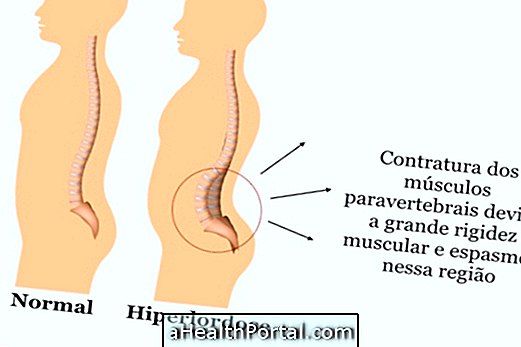Pregnant women diagnosed with gestational diabetes have the risk of preterm labor, induction of labor and even loss of the baby. However, these risks can be lowered by keeping the blood sugar level properly monitored throughout pregnancy.
Pregnant women who keep their blood glucose under control and who do not have babies weighing more than 4 kg can wait up to 38 weeks' gestation for the spontaneous onset of labor and can have a normal birth if this is their wish. But if it is proven that the baby has more than 4 kg, the doctor may suggest caesarean section or labor induction at 38 weeks.
The risks of childbirth in gestational diabetes may be:
| Risks to mother | Risks for the baby |
| Normal labor too long because of poor uterine contractility | Be born before the due date due to rupture of the amniotic pouch before 38 weeks of gestation |
| Having to induce labor with medications to initiate or accelerate normal labor | Decreased oxygenation during delivery and possibility of hypoglycemia soon after birth |
| Laceration of the perineum during normal delivery due to the size of the baby | Abortion at any time during pregnancy or death soon after delivery |
| Eclampsia, urinary infection and pyelonephritis | Be born over 4 kg, which increases the risk of developing diabetes in the future and of suffering some alteration in the shoulder or clavicle fracture during normal delivery |
To reduce the risk of gestational diabetes, it is important to keep your blood glucose under control by checking your blood glucose daily, eating properly and exercising, such as walking 3 times a week.
Watch the video to learn how diet can reduce the risks of gestational diabetes:

Preferably delivery should be performed in the morning for better glycemic control, which should be maintained around 100 mg% or less, before and during delivery to prevent neonatal hypoglycaemia. In some cases, the doctor may indicate the use of insulin and serum by the vein, just before and during delivery.
How is the postpartum of gestational diabetes?
Immediately after birth, glycemia should be measured every 2 to 4 hours to prevent hypoglycemia and ketoacidosis, which are common during this time, but normally glycemia normalizes in the postpartum period, although there is a risk of developing type 2 diabetes in about 10 years if you do not have adequate food
Before hospital discharge, the mother's blood glucose should be measured to see if she has normalized. Some women need to continue taking oral antidiabetics after delivery, and metformin should not be used in breastfeeding because it passes into breast milk. Therefore, your doctor may order Nateglinide, pioglitazone or rosiglitazone, for example.
The glucose intolerance test should be performed 6 to 8 weeks postpartum to check if glycemia remains normal. Breastfeeding should be stimulated because it is essential for the baby and because it helps in postpartum weight loss, helps regulate insulin and the disappearance of gestational diabetes.
When glycemia is controlled at the time of delivery and remains the same, healing of caesarean section and episiotomy occurs in the same way as in women who do not have gestational diabetes, but may be more time consuming if glycemia remains altered after delivery.
Here's how to ensure breastfeeding in:
- How to prepare breast for breastfeeding
- What to eat at breastfeeding
























